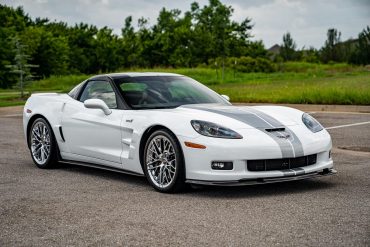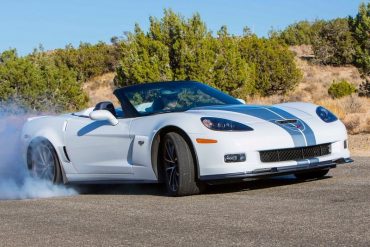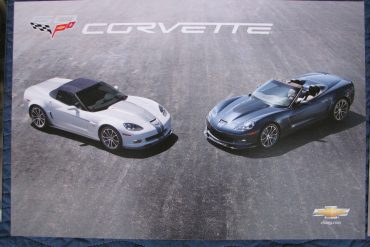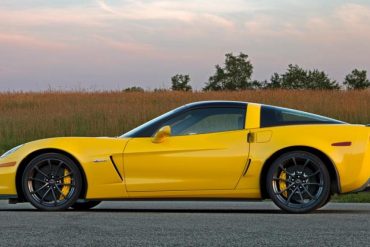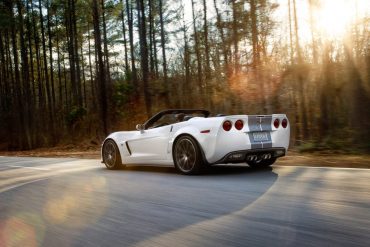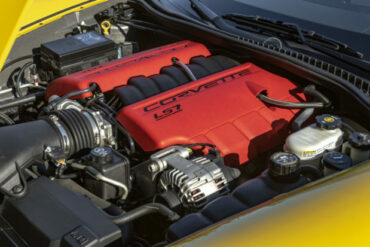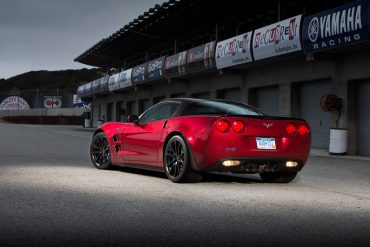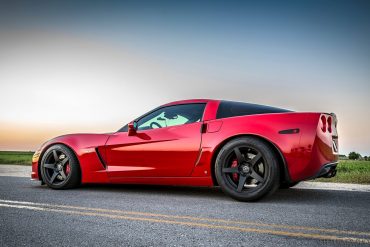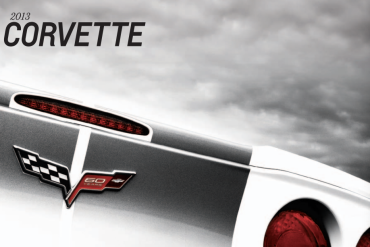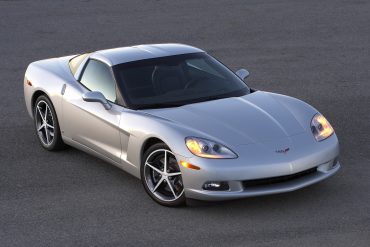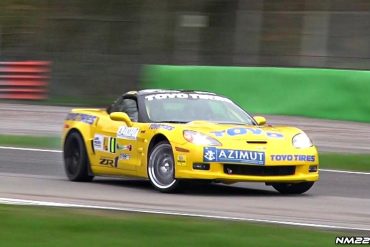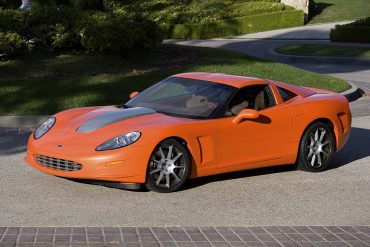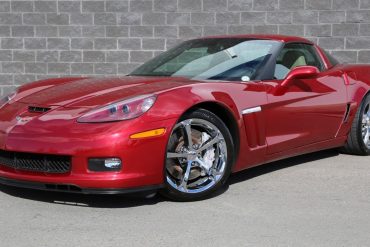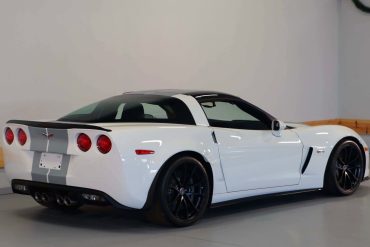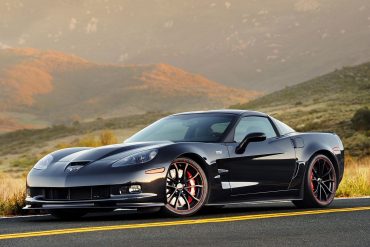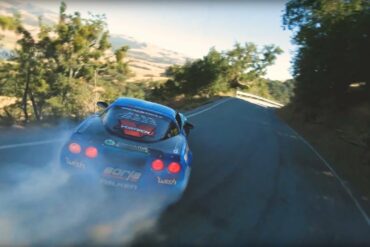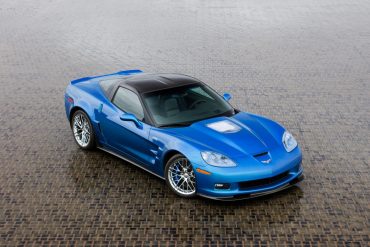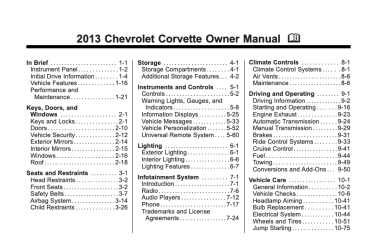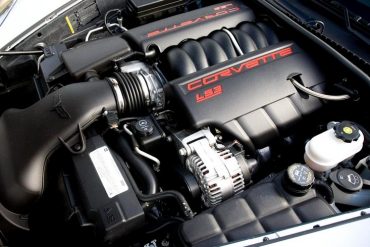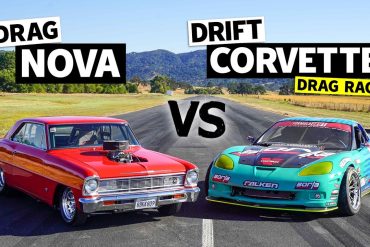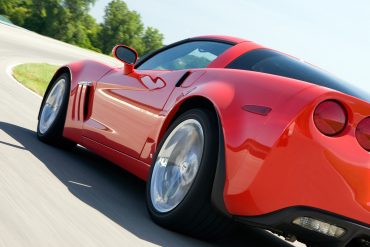Does Corvette Ownership Live Up to the Hype? I had my first opportunity to drive a Corvette when I was...
See the complete technical specifications and performance information for the 2013 Chevrolet Corvette, including engine specs, acceleration, & quarter mile.
“How will we remember the C6? I think of it as a brash and somewhat hairy car on the limit,...
2013 Corvette Ads 2013 Corvette TV Commercials ...
2013 C6 Corvette Pictures & Images Check out these great 2013 Corvette images. The exterior of the 2013 sixth generation...
The 2013 Corvette 427 Convertible served double-duty as a commemorative edition model. While it marked the departure of the sixth-generation Corvette. The real selling-point was the powerplant at the heart of the car - a 427-cubic-inch (7.0L) LS7 engine, the same engine used in the C6 Corvette Z06. Rated at 505 horsepower (377kW) and 470lb.-ft of torque (637 Nm), this 427 was the most powerful engine GM had ever installed in a production Corvette convertible to date.
In the midst of the Z06’s development, engineers knew that something truly remarkable would be needed to best the base Corvette’s 400 horsepower LS2. In its production form, this new small-block V8 came to be known as the LS7. The LS7 was nothing short of all-powerful, featuring a displacement of 427 cubic inches and an output of 505 horsepower.
Two beautiful, low-mileage Corvettes are being offered at Bring A Trailer, a 2008 Chevrolet Corvette Z06 and a 2013 Chevrolet...
2013 C6 Corvette ZR1 Pictures & Images ...
Edmunds Cars compares the 2014 Chevy Corvette Stingray vs 2013 Porsche 911 which involves a series of track tests such...
Black 2013 Chevrolet Corvette We found some examples of 2013 Corvette in the Black color scheme. These real Black paint pictures of real 2013 Chevy...
Exclusive footage of a 2013 Corvette ZR1 drifting. ...
The C6.R ZR1 GT2, if you were to use its full name, was the model used in the last four years before the Corvette C7.R was introduced, and had a slick sequential manual operated by paddles that was combined with the rear differential to create a rear transaxle. This style of transaxle eventually made it into the road-going Corvette, especially the Grand Sport and ZR1 of the C7 generation.
Corvette production was basically flat for the final year of C6 production. GM offered a record 7 different models and we saw a total of only 13,466 Corvettes rolled off the end of the assembly line for the 2013 model year.
Blade Silver 2013 Chevrolet Corvette We found some examples of 2013 Corvette in the Blade Silver color scheme. These real Blade Silve paint...
A ZR1 Corvette was filmed doing a lot of drifting at the Monza Rally Show 201. Take note that it...
The Callaway C16 was Callaway’s 16th major automotive project. It was a limited production, bespoke automobile, built to order, by what the Press called “the best specialist engineers in the business”. These cars are seriously fast, beautiful, and exclusive. The C16 was a direct competitor for the Porsche GT3, the Lamborghini Murcielago, the Ferrari 599 GTB. It was both faster and more capable than its competitors, at less cost.
Below are the VIN ranges for the 2013 Corvette cars:
Looking for information on how to maintain your 2013 Corvette? We've curated resources to help you keep your Corvette in great shape for years to come!
Evoking the heritage of early 427-powered Corvettes, the 427 Convertible Collection edition model takes Corvette convertible performance to an entirely...
The C6 is truly a track-capable beast that offers incredible power at an affordable price. When developing the sixth-generation Corvette, Chevrolet adopted the mantra, "If it ain't broke, don't fix it." For all intents and purposes, it was an evolution of the C5.
Matt Field is a renowned for his superb drifting on the racetrack, but this time he shows his skills on...
The ZR-1 returned with the 1990 Corvette lineup after an eighteen year hiatus. This time, it featured a special LT5 engine that had been developed by Lotus (which, at the time, had been a subsidiary of General Motors.) The LT5 engine featured an all-aluminum block, four overhead camshafts, and 32 valves. It also featured an air management system which enabled the car to maintain proper operation while closing off half of its fuel injection system.
This Owners Guide contains important information regarding the operation and maintenance of your 2013 Corvette. In order to obtain maximum enjoyment and usage from your car, we suggest that you familiarize yourself with the contents...
Inferno Orange 2013 Chevrolet Corvette We found some examples of 2013 Corvette in the Inferno Orange color scheme. These real Inferno Orange paint...
Upon the LS3’s release in 2007, this trend toward continual technological advancement was clearly evident. As the new power plant for the standard 2008 Corvette, the LS3 provided consumers with exactly what they had been craving, unsurpassed performance. With every reiteration, the LS small-block has become more powerful, efficient, and robust.
In today’s video, we got a modified 2013 Corvette ZR1 attempting to run the fastest top speed in a 1...
Hoonigan’s This vs. That is a series that focuses on weird drag racing matchups and this time we have a...
C6 Corvette Modding Guide When the C6 Corvette burst onto the scene for its first year of production in 2005,...



